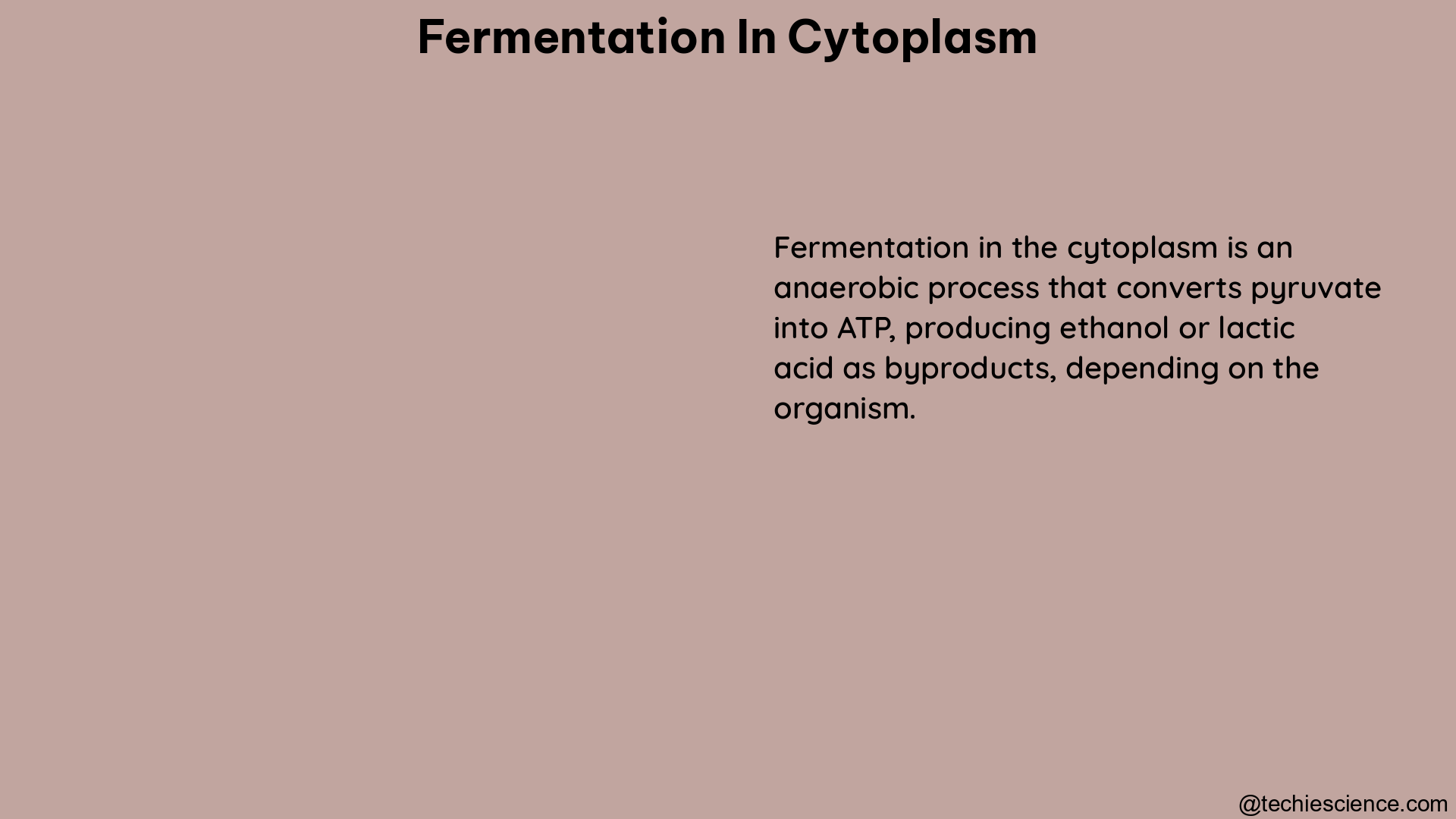Fermentation in the cytoplasm is a crucial metabolic process that occurs in the cytoplasm of cells, where organic compounds are broken down anaerobically to produce energy in the form of ATP (adenosine triphosphate) and NADH (nicotinamide adenine dinucleotide). This process is essential for the survival of cells in environments with limited oxygen supply, and it has significant implications for various industries, including biofuels, food production, and pharmaceutical development.
Quantifying Cell Concentration in Lignocellulosic Media
Quantifying cell concentration in lignocellulosic media, such as those derived from plant biomass, can be a challenging task due to the presence of particles, auto-fluorescence, and the intrinsic color and turbidity of the media. However, several methods have been evaluated for quantifying total and viable yeast cell concentrations in such samples:
-
Manual Cell Enumeration in a Hemocytometer: This traditional method involves manually counting cells under a microscope using a specialized counting chamber called a hemocytometer. This technique provides a direct measurement of cell concentration, but it can be time-consuming and subject to operator bias.
-
Plating and Enumeration of Colony Forming Units (CFU): In this method, a sample is diluted and spread on a solid growth medium, and the number of colonies that form is counted. This method provides a measure of viable cell concentration, but it can underestimate the total cell population due to the presence of non-culturable cells.
-
Quantitative Polymerase Chain Reaction (qPCR): qPCR is a molecular technique that can be used to quantify the total number of cells by targeting specific DNA sequences. This method is highly sensitive and can detect both viable and non-viable cells, but it requires specialized equipment and expertise.
-
In Situ Dielectric Spectroscopy: This technique measures the dielectric properties of a cell suspension, which can be correlated with cell concentration. It is a non-invasive and rapid method, but it may be affected by the presence of particles and other interfering substances in the media.
Among these methods, manual enumeration of cells in a hemocytometer and the enumeration of CFU have been further validated for quantitative assessment of cell numbers in simultaneous saccharification and fermentation experiments on steam-exploded wheat straw.
Transition from Fermentation to Respiration in Yeast Cells

In the case of yeast cells, the transition from fermentation to respiration is a critical factor that determines the history-dependent behavior (HDB) of yeast cells in fluctuating carbon sources. The lag time observed in this transition is influenced by several factors:
-
Pre-Growth Regimen: The pre-growth conditions, such as the carbon source and the duration of growth, can affect the expression of genes involved in the fermentation-to-respiration transition.
-
Duration of Growth on Fermentable Carbon Source: The length of time that yeast cells are grown on a fermentable carbon source can impact the expression of respiratory components and the lag time in the transition to respiration.
-
Expression of Non-Fermentable Sugar-Specific Genes: The expression of genes specific to the utilization of non-fermentable sugars, such as those involved in the tricarboxylic acid (TCA) cycle and the electron transport chain, can influence the lag time in the fermentation-to-respiration transition.
By employing population-level and single-cell studies, researchers have identified respiratory components as the deterministic factor for the lag phase in the fermentation-to-respiration switch. Understanding this transition is crucial for optimizing the performance of yeast cells in various bioprocesses, such as the production of biofuels and other valuable chemicals.
DNA Sequencing Technologies in Fermentation Processes
DNA sequencing technologies have been instrumental in identifying fluctuations in microbial populations during fermentation processes. Each microorganism has a unique DNA makeup, and DNA sequencing tools have been used to map out the genomes of many life forms, including those crucial for fermentation.
Recent technological advancements have significantly accelerated the speed of DNA sequencing and driven down the costs, making DNA sequencing more affordable and accessible for use in the food industry and other fermentation-based applications. These technologies have enabled researchers and industry professionals to:
-
Identify and Monitor Microbial Populations: DNA sequencing can be used to identify the microbial species present in a fermentation system and track their relative abundances over time. This information is crucial for understanding the dynamics of the microbial community and its impact on the fermentation process.
-
Detect Microbial Contaminants: DNA sequencing can be used to detect the presence of unwanted or pathogenic microorganisms in fermentation systems, which is essential for ensuring food safety and product quality.
-
Optimize Fermentation Processes: By understanding the microbial composition and dynamics during fermentation, researchers and industry professionals can optimize the process parameters, such as nutrient composition, temperature, and pH, to enhance the production of desired metabolites or products.
-
Develop Targeted Starter Cultures: DNA sequencing data can be used to identify and select specific microbial strains with desirable characteristics, such as high productivity or stress tolerance, for use as starter cultures in fermentation processes.
The integration of DNA sequencing technologies into fermentation processes has significantly improved our understanding of the complex microbial interactions and dynamics that occur during these processes, leading to more efficient and reliable fermentation-based industries.
Conclusion
Fermentation in the cytoplasm is a fundamental metabolic process that plays a crucial role in the survival and performance of cells in environments with limited oxygen supply. The quantification of cell concentration in lignocellulosic media, the transition from fermentation to respiration in yeast cells, and the application of DNA sequencing technologies are critical aspects of this process.
By understanding and optimizing these factors, researchers and industry professionals can enhance the efficiency and productivity of fermentation-based processes, leading to advancements in biofuel production, food and beverage manufacturing, and the development of novel bio-based products. The continued advancement of these technologies and the integration of multidisciplinary approaches will be key to unlocking the full potential of fermentation in cytoplasm.
References:
- Wang, R., Lorantfy, B., Fusco, S. et al. Analysis of methods for quantifying yeast cell concentration in complex lignocellulosic fermentation processes. Sci Rep 11, 16664 (2021). https://doi.org/10.1038/s41598-021-90703-8
- The Science of Fermentation – Lab Manager. https://www.labmanager.com/the-science-of-fermentation-1432
- Transition between fermentation and respiration determines history-dependent behaviour of yeast. https://www.ncbi.nlm.nih.gov/pmc/articles/PMC6211830/
- Rapid DNA Sequencing Technologies and Their Applications in Food and Beverage Industries. https://www.ncbi.nlm.nih.gov/pmc/articles/PMC6121292/
- Metabolic Engineering of Yeast for Production of Fuels and Chemicals. https://www.ncbi.nlm.nih.gov/pmc/articles/PMC4367269/
- Microbial Diversity and Dynamics During Cocoa Fermentation. https://www.ncbi.nlm.nih.gov/pmc/articles/PMC6121292/

Hi…I am Sadiqua Noor, done Postgraduation in Biotechnology, my area of interest is molecular biology and genetics, apart from these I have a keen interest in scientific article writing in simpler words so that the people from non-science backgrounds can also understand the beauty and gifts of science. I have 5 years of experience as a tutor.
Let’s connect through LinkedIn-